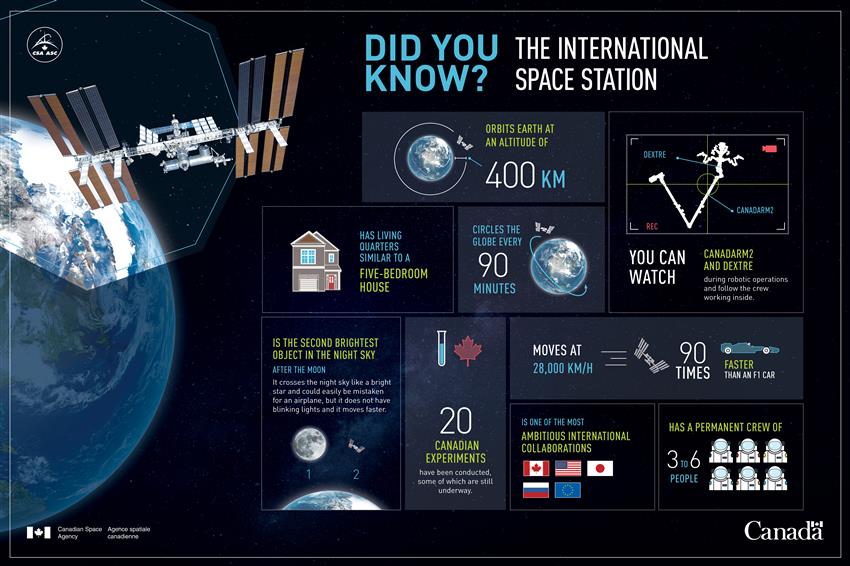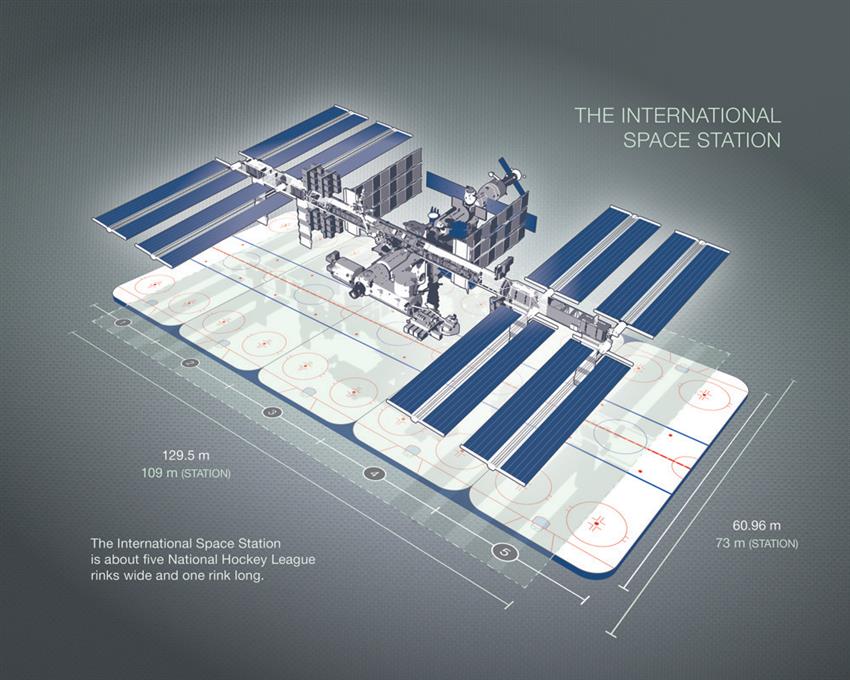About the International Space Station
The International Space Station (ISS) is a research laboratory that orbits the Earth. Canada is one of the Station's partners, along with the United States, Russia, Europe and Japan.
Canada's contribution to the ISS consists of cutting-edge robots Canadarm2 and Dextre, and the Mobile Base System, a transport and storage platform.
Providing these robots has given Canada access to the orbiting laboratory to:
- perform science experiments
- test new technology
- send astronauts to the Space Station
To date, over 24 Canadian studies have been conducted aboard the ISS, some of which are still underway. These experiments are designed to:
- study the effects of space travel on astronauts' bodies before they undertake longer journeys further into our solar system
- benefit Canadians and all of humanity
Seven Canadian Space Agency (CSA) astronauts have completed nine missions aboard the ISS.
CSA astronaut Joshua Kutryk talks about the International Space Station (ISS) and its importance in terms of science and exploration. The ISS is a key stepping stone for future deep-space missions. (Credits: Canadian Space Agency, NASA)
- The first module of the ISS was launched on .
- It takes 15 minutes for the Station to cross Canada.
- Every day, the ISS circles the Earth 16 times, a distance roughly equal to a round trip to the Moon!

Text version of infographic Did You Know? The International Space Station
Quick facts on the ISS. (Credit: CSA)
Modules and dimensions
The ISS has many pressurized modules (PDF, 8 MB), or habitable sections filled with breathable air. Its living space is about the size of a five-bedroom home.
The Station is:
- about as wide as five hockey rinks
- a bit longer than one hockey rink

Text version of infographic How big is the ISS
The ISS is about five National Hockey League rinks wide and one rink long (Credit: CSA)
